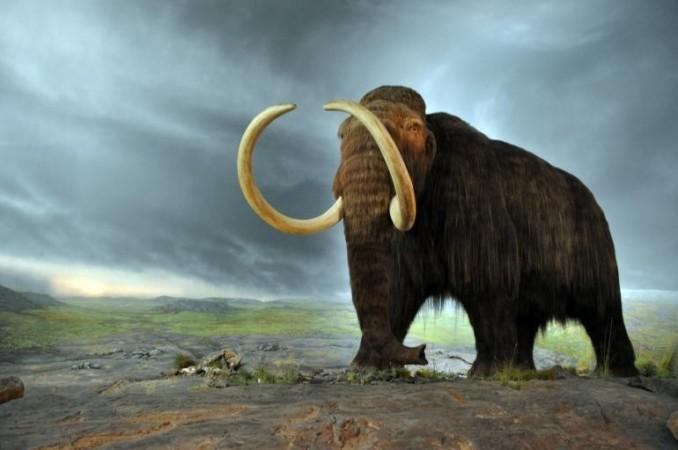
A group of people at a bachelor party discovered an ancient fossil at the New Mexico State Park, when they slipped upon a three-million-year-old fossil of an elephant-like creature called stegomastodon.
The group was celebrating at Elephant Butte Lake State Park, around 150 miles south of Albuquerque, N.M., when they noticed something cropping out of the dirt.
"As we are cruising by we see a large tusk or what seems to be a large tusk coming out of the ground about a good three to four inches out," Antonio Gradillas, one of the partying member, told KRQE News 13.
Soon, Gradillas and his group alerted the New Mexico Museum of Natural History on their suprising discovery.
Gary Morgan, a paleontologist was among the team of researchers and state park officials who spent uncovering the nearly complete fascinating skull fossil of a stegomastodon.
It was first considered to be fossil remains of a woolly mammoth but paleontologists identified the fossil to be like that of a stegomastodon - a 13,000-pound and 9-foot tall, primitive elephant that roamed the subtropical area millions of years ago.
Moreover, the fossil was almost in intact form. "This is far and away the best one we've ever found. Maybe the only complete one found in New Mexico." Las Cruces Sun-News quoted Gary Morgan.
Stegomastodon lived during the Ice Age era around 40 to 60 million years ago and was probably around 50 years old when it died. Paleontologists are trying to identify the gender of the fossil and the cause of its death. According to some experts, they went extinct around 1.3 million years ago.
"It was almost perfect," Morgan said, adding that the creature probably weighs between 500 and 1,000 pounds.
"The excavation site will be refilled and open again for recreation as soon as the scientists were finished" said Dunlap, superintendent of Elephant Butte State Park.
The skull will be taken to the Natural History Museum, where it will be cleaned and preparations will be made for its study. Dunlap hopes that the skull will be on display soon.





![BJP fields Tashi Gyalson for Ladakh; drops sitting MP [details]](https://data1.ibtimes.co.in/en/full/797185/bjp-fields-tashi-gyalson-ladakh-drops-sitting-mp-details.jpg?w=220&h=138)








